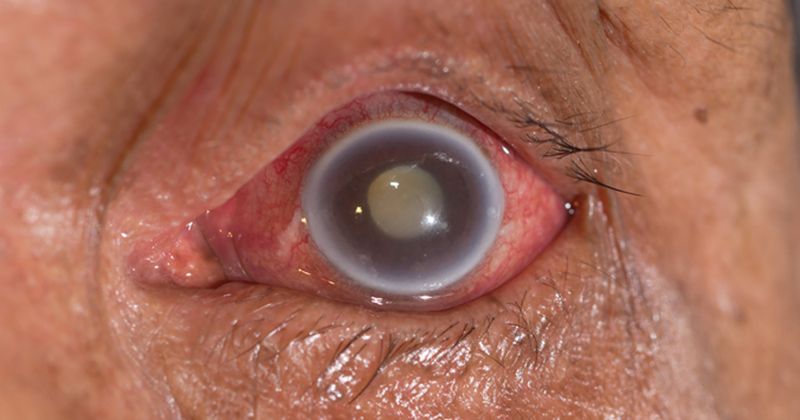BLOG: Cataract diagnosis can be good news for patients with ocular hypertension
Ocular hypertension is a risk factor for glaucoma, but in the absence of any glaucomatous damage it does not necessitate medical intervention.

Screening for glaucoma is part of my comprehensive exam. I tell every patient what their IOP is and whether it falls within the normal range of about 11 mm Hg to 21 mm Hg. When IOP is elevated above that range, I take optic disc photos during the exam to monitor the physical appearance and schedule another appointment within a month to perform baseline glaucoma testing.

If everything is unremarkable, the nerve looks healthy, IOP is only modestly elevated, and there is no strong family history of glaucoma, I continue to see the patient on an annual basis. I offer reassurance that their IOP could just be running a little high, but that we want to continue to monitor it over time, as we would high blood pressure or elevated blood sugar. At future visits, we will try to vary the time of day, to see whether diurnal fluctuations in IOP exist.
If the patient has any additional risk factors, however, I like to see them more frequently — every 6 months. If we start to see cupping of the nerve, IOP creeping above 30 mm Hg or there is a strong family history of glaucoma, I will initiate treatment with topical medications. The Ocular Hypertension Treatment Study showed that higher IOP is a significant risk factor for progression to primary open-angle glaucoma (POAG), and that IOP-lowering medications are protective (Gordon, et al.).
At this stage, I also educate the patient more about glaucoma, so they understand the importance of continued follow-up visits and compliance with their medication. I show them a simulation of how peripheral vision can be lost over time, but I also share the good news that we have caught the ocular hypertension at an early stage, so there is a good chance it won’t progress to negatively affect their quality of life.
A diagnosis of cataract is actually good news for a patient with ocular hypertension. We know that cataract surgery alone will reduce IOP, but it can also be paired a with minimally invasive glaucoma surgery (MIGS) device such as the iStent inject trabecular micro-bypass stent (Glaukos) or Hydrus Microstent (Ivantis/Alcon). The surgeons I refer to tend to use the iStent inject in patients with ocular hypertension and mild to moderate POAG and reserve the Hydrus for more moderate glaucoma.
A recent study showed that implantation of iStent inject can further reduce IOP beyond cataract surgery alone (Clement, et al.), potentially saving the patient significant time and expense by eliminating medications and more frequent office visits.
The study also showed that 24 months after cataract surgery with micro-bypass stents, mean IOP reduction was 22% in eyes with ocular hypertension, and none of the eyes required medication. “The data suggest that earlier intervention ... could alter the trajectory of disease progression before Schlemm’s canal and aqueous collector channels are affected by loss of outflow,” the authors concluded.
This is an easy decision for me and for the surgeons I refer to because implanting micro-bypass stents at the time of cataract surgery carries no additional risk. In the iStent inject pivotal trial, there were no reports of hypotony, significant hyphema, flat anterior chamber, choroidal hemorrhage/effusion or myopic shift, and no significant increase in endothelial cell loss or infection compared with phacoemulsification alone (Samuelson, et al.). In most cases, the procedure can be combined with cataract surgery at no additional cost to the patient.
I find that this is an easy decision for patients as well, particularly because they hear the same advice from me and from the cataract surgeon. Essentially, cataract surgery is a one-time chance for them to be proactive about reducing IOP.
References:
- Clement C, et al. Clin Ophthalmol. 2020;doi:10.2147/OPTH.S271646.
- Gordon MO, et al. Arch Ophthalmol. 2002;doi:10.1001/archopht.120.6.714.
- Samuelson TW, et al. Ophthalmology. 2019;doi:10.1016/j.ophtha.2019.03.006.
For more information:
Albright is clinic director at Moses Eyecare Center in Merrillville, Ind., where she also serves as externship coordinator for optometry students at Indiana University and Chicago College of Optometry. She practices full-scope optometry, with a focus on specialty lenses, perioperative care and ocular disease management.
Collapse
